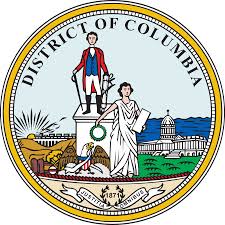Commissioners end 2018 in midst of more windy debate
By DARREL RADFORD - dradford@thecouriertimes.com
Commissioners seemed to ask “What’s the problem?” People in the spacious former Henry Circuit Courtroom seemed to say “What’s the hurry?”
The final commissioners meeting of 2018 was a microcosm of a tumultuous 2018 dominated by debate over wind turbines. During a meeting filled with sarcastic remarks toward commissioners, paparazzi-like treatment for two Big Blue River/Calpine officials as they left the meeting early and unanimous passage of five wind turbine-related measures, the old year roared its way out the door like a wind-blown lion.
Commissioners said they were acting in the county’s best interests by passing the five measures that included establishing a transportation plan regarding roads and drains; creating a decommission plan from 5 to 8 years; approving indemnification and escrow agreements and stipulating annual training be provided to emergency responders should a wind turbine project ever be built.
“In reality, we’re just setting regulations before Big Blue River/Calpine determines where to apply for a permit,” Commissioner Kim Cronk said.
Susie Eichhorn drew applause for her comments at the end of the meeting, questioning why such action was even necessary when so many in the county have said they don’t want the turbines here in the first place.
“Those agreements could have been tabled and considered later,” Eichhorn said. “I’m sure that you three have served the county very well on most issues with the county. This single issue is the one issue that may affect most every person living in the county, and I think you know in your heart of hearts that there are a lot of people who do not want this. A lot.”
“We’ve had over 1,000 signatures on a petition, we’ve attended hearings, we have had town resolutions passed by 13 towns in the county saying they do not want turbines,” Eichhorn continued. “We now have 11 towns who have signed an ordinance saying they do not want these near their towns, and yet you’re very open to immediately signing these agreements before the end of the year.”
Eichhorn then spoke to each commissioner directly.
“Butch, I’m sure you really have been a good civil servant, but I don’t think you’re representing the people by signing these agreements,” she said.
“Kim, I think you’re sabotaging your very own community where you live,” she said to Cronk. “And Mr. Yanos, I imagine that your term will end in 2020. I fully expect to see a wind lease signed by you after that point.”
“You won’t see one,” Yanos replied.
“I hope that is the case,” she said.
Commissioners and attorney Joel Harvey emphasized the issues passed were simply establishing procedures and a groundwork if a wind company wants to proceed.
Patron Dan Richey asked for clarification, stating “Did I hear they do not go into affect until a commission-approved use is approved?”
“With the exception of the escrow agreement, that is correct,” Attorney Joel Harvey said, referring to a stipulation a wind company must put up $75,000 in escrow funds before proceeding, money the county can use for engineering expenses and inspections.
“Since these are moot until the time a CAU is approved,” Richey continued, “this in no way should influence the planning commission on their decisions concerning a CAU and it should not be used as evidence that we already have agreements in place and influence the decision of the planning commission – is that correct? Because Calpine will mention they are approved and I’m sure other members of the planning commission will mention that they’ve been approved. But they are not effective until the CAU’s approved on its own merit?”
Harvey said someone could come in and say these agreements have been passed, but conversely, “these things don’t become effective until the CAU is approved, so they don’t mean anything.”
“There will be a public hearing on the CAU application if and when it is submitted, so you will have an opportunity to speak,” Harvey said.
To date, no such CAU application for a wind farm project has been submitted.
“In reality, we’re just setting regulations before they determine whether to apply for a permit,” Cronk said.
Harvey’s explanations not withstanding, many questions linger about plans Calpine/Big Blue River Wind Farms have for between 80 and 100 turbines in northwestern Henry County.
“Has Calpine sold the power? Would have been a good question to ask,” Eichhorn said.
Martin Tobey summed up the final Commissioners meeting when he made reference to the fact that Calpine officials left the meeting immediately after Commissioner action on the wind-related issues.
“A good example of ethics happened tonight,” he said, claiming that those who really cared about the county would have stayed for the entire meeting.









Thrive Indianapolis Draft Plan